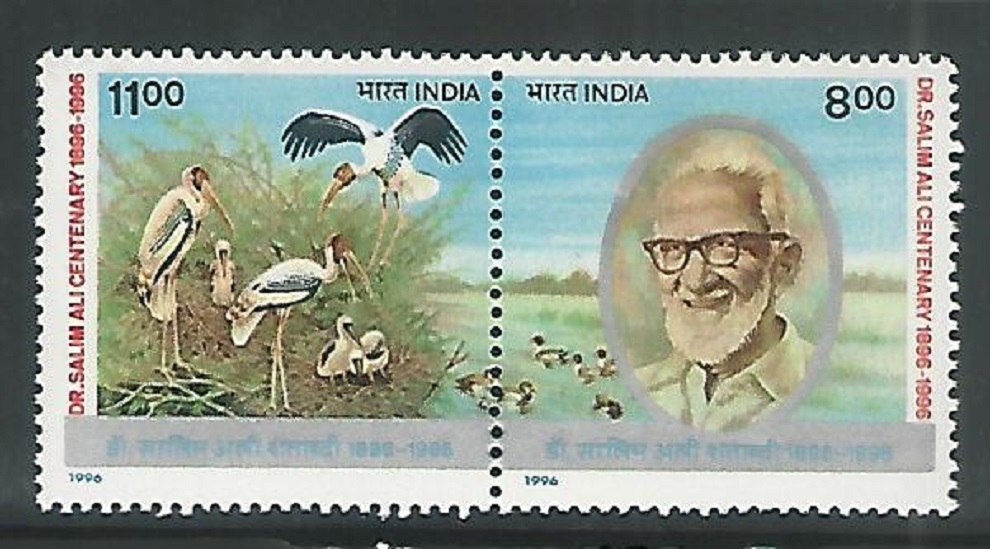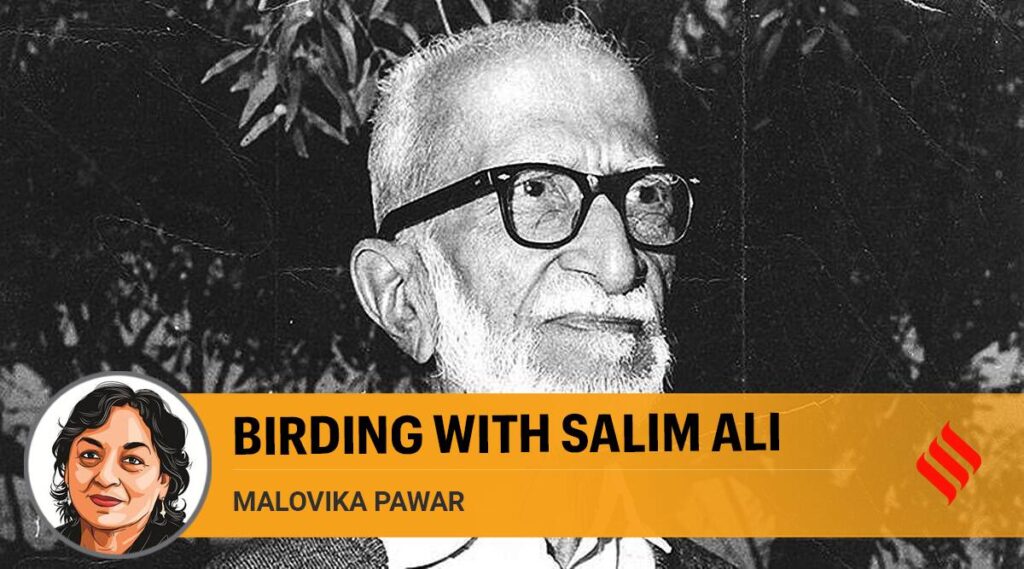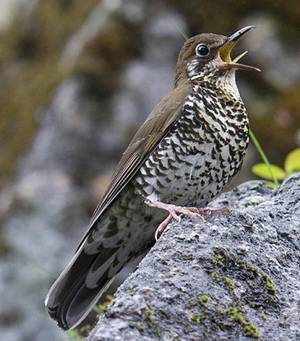Mumbai, MAHARASHTRA :

In memory of Ornithologist Dr Salim Moizuddin Ali.
Dr Salim Moizuddin A. Ali (November 12, 1896-June 20, 1987) was the first Indian to conduct systematic bird surveys across undivided India and even later, and then penned several bird books which popularised ornithology in the sub-continent.
Mumbai :
In a unique initiative, the forgotten radio broadcasts of legendary ornithologist, the late Dr Salim Ali have been compiled and brought ‘alive’ in a book form, which will be released on November 12, marking the 125th birth anniversary of the ‘Birdman of India’.
Dr Salim Moizuddin A. Ali (November 12, 1896-June 20, 1987) was the first Indian to conduct systematic bird surveys across undivided India and even later, and then penned several bird books which popularised ornithology in the sub-continent.
The book — “Words For Birds” — edited by renowned author Tara Gandhi, comprises all the 35 broadcasts of Dr Ali on All India Radio (AIR) — from British India to Independent 1980s — probably unheard of by most people in the current century.
“I had worked with Dr Salim Ali for long… I have even worked on his other papers and documents and I came across these broadcasts that are well-preserved by BNHS,” the book editor Gandhi told IANS briefly, as the book awaits official release.
It will be unveiled as part of the ongoing 125th birth anniversary celebrations of the great ornithologist conferred with the Padma Vibhushan (1976), at the Bombay Natural History Society (BNHS, founded 1883), said Education Officer Raju Kasambe.
The 35 talks that comprise “Words For Birds” were broadcast over 45 years, between 1941-1985, revealing Dr Ali’s exceptional skills both as an oral communicator and a passionate bird propagandist.
“The object of these talks is really to interest listeners, in the first instance for the healthy pleasure and satisfaction bird watching affords rather than for its intrinsic scientific possibilities,” the ornithologist had said of his radio transmissions.
The enthralling radiocasts, in a story-telling style, cover a wide range — bird habits and habitats, risks they face, the crucial role of avian in nature’s cyclic processes, how they benefit agriculture, unseen or little understood contributions to the economy, etc.
On his passion, Dr Ali said how 50 years ago bird watching in India was nowhere as popular, or indeed respectable, as it has become now, and in his younger days he would time and again fall in with persons who left him with a feeling, as they withdrew, that they were inwardly tapping a pitying finger on their foreheads.
“Their first glimpse of me very often was, it is true, of a distinctly shabby khaki-clad individual of the garage mechanic type, wandering leisurely and rather aimlessly about the countryside and surreptitiously peeping into bushes, and holes in tree-trunks and earth banks…” said the legend modestly.
Though he had focussed mainly on birds in his radio talks, it is evident that he was interested in all forms of wildlife and contemporary conservation issues, too, with each talk reading like a short essay, and the reader can even glance randomly through it to be immensely educated and entertained.
Dr Ali’s best-sellers from his massive collection include “Book Of Indian Birds” and the monumental 10-volume “Handbook of the Birds of India and Pakistan” (co-authored with S. Dillon Ripley), “The Birds of Kutch”, “Indian Hill Birds”, “Birds of Kerala”, “The Birds of Sikkim”, and his autobiography, “The Fall of a Sparrow”.
The book editor Gandhi was guided by Dr Ali for MSc (Field Ornithology), and she works for biodiversity conservation, conducts surveys to document birds and other wildlife in India.
Besides scientific and popular articles on nature and ecology, she has penned several books like “Birds, Wild Animals and Agriculture: Conflict and Coexistence in India” and edited the two-volume “A Bird’s Eye View: The Collected Essays and Shorter Writings of Salim Ali”.
Published by Black Kite and Hachette, “Words For Birds” (256 pg/Rs.599) will soon be available from BNHS and Amazon platforms. — IANS
source: http://www.clarionindia.net / Clarion India / Home> India> Life> Books / November 05th, 2021










